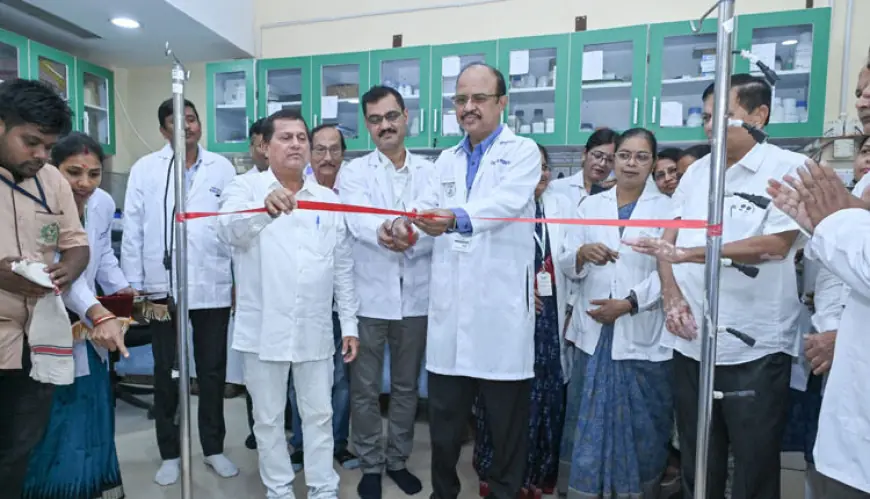Odisha’s First MALDI-TOF Equipment Installed at KIMS for Fast, Accurate & Cost-Effective Diagnosis
In a major advancement in medical diagnostics in the state, the Kalinga Institute of Medical Sciences (KIMS) today became the first healthcare facility in Odisha to install the MALDI-TOF (Matrix-Assisted Laser Desorption/Ionization Time-of-Flight) system in its Central Laboratory.

In a major advancement in medical diagnostics in the state, the Kalinga Institute of Medical Sciences (KIMS) today became the first healthcare facility in Odisha to install the MALDI-TOF (Matrix-Assisted Laser Desorption/Ionization Time-of-Flight) system in its Central Laboratory. The new system was inaugurated by Dr. Achyuta Samanta, Founder of KIIT, KISS, and KIMS.
The technology has a remarkable accuracy rate of 98.3 per cent and plays a crucial role in detecting antimicrobial resistance. In addition to speed and precision, MALDI-TOF also offers cost-effective benefits. It cuts down on labour hours, reduces hospital stays, and minimizes the need for repeated or additional tests.
It also decreases laboratory waste by limiting the use of chemicals and reagents.
It not only improves diagnostic speed but also enhances antibiotic stewardship, helping doctors choose the right antibiotics early, thereby reducing the risk of resistance and improving outcomes.
This state-of-the-art technology offers rapid, highly accurate, and cost-effective identification of microorganisms.
MALDI-TOF identifies bacteria, fungi, yeast, and other microorganisms by analysing their unique protein “fingerprints”. While conventional methods take 24 to 48 hours, this system delivers results in just 1.5 minutes per sample, allowing clinicians to begin appropriate treatment without delay.
The system works by growing microbes on an agar plate, placing a tiny sample on a metal surface, and using a laser to break proteins into charged fragments. These fragments are then analysed and compared against a large database to quickly identify the organism.
What's Your Reaction?
 Like
0
Like
0
 Dislike
0
Dislike
0
 Love
0
Love
0
 Funny
0
Funny
0
 Angry
0
Angry
0
 Sad
0
Sad
0
 Wow
0
Wow
0


















































